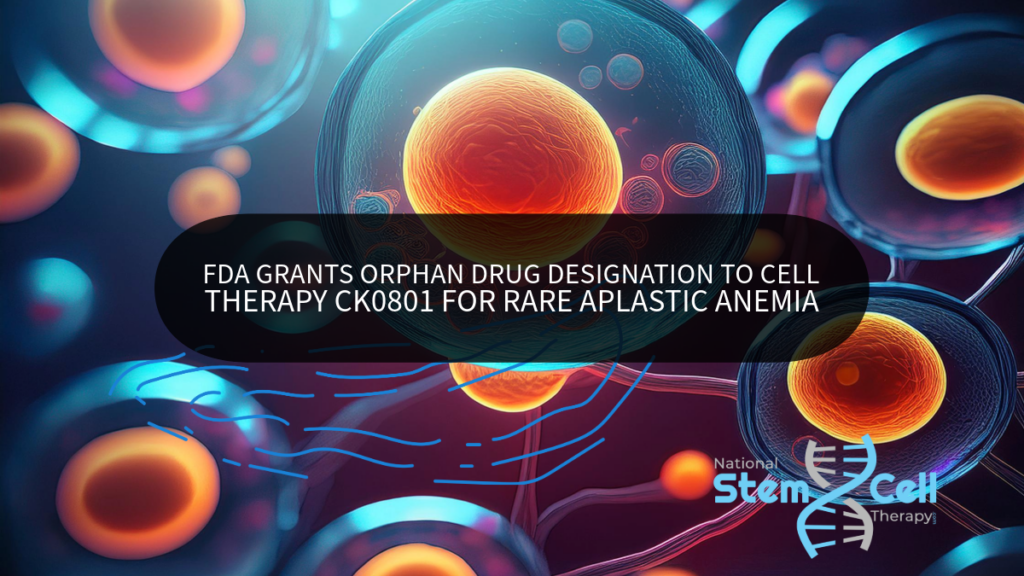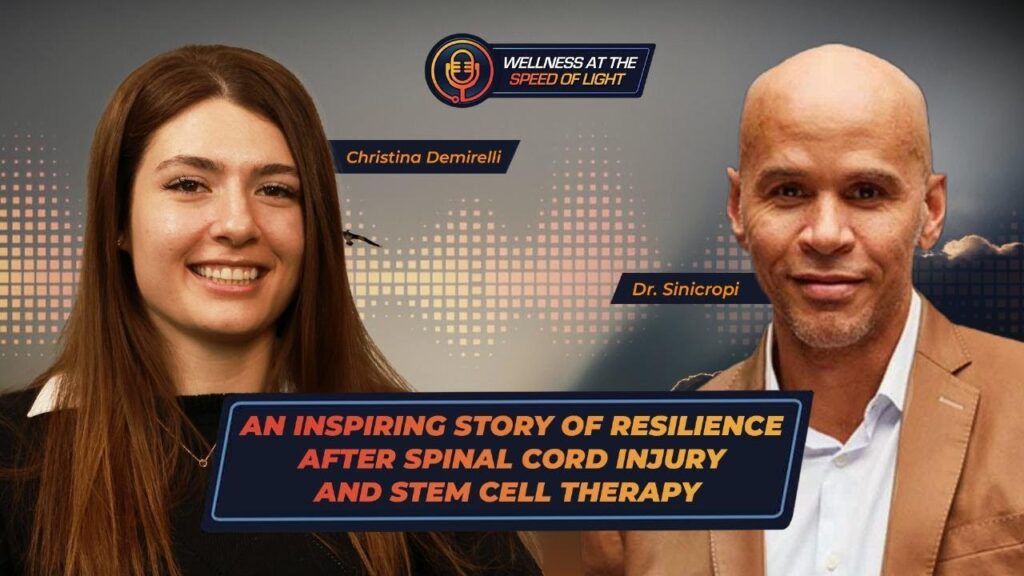Welcome to our blog post on stem cell treatments for epilepsy. In this article, we will explore the latest research and breakthroughs in stem cell therapy for epilepsy, offering new hope to individuals living with this challenging condition. By leveraging the power of regenerative medicine, researchers are paving the way for innovative treatments that have the potential to improve the lives of epilepsy patients.
Key Takeaways:
- Stem cell treatments provide new hope for epilepsy patients, especially those with drug-resistant temporal lobe epilepsy.
- Researchers at UC San Diego Health are conducting clinical trials using stem cells derived from human sources to restore balance and reduce seizures in epilepsy patients.
- Stem cell-derived neurons show promise in reducing recurrent seizures and addressing cognitive and mood dysfunction associated with epilepsy.
- Scientists are developing a brain “pacemaker” device to record and stimulate brain activity, offering a potential treatment option for patients who do not respond to traditional therapies.
- These breakthroughs in stem cell research and regenerative medicine offer optimism for the future of epilepsy treatment.
The Potential of Regenerative Brain Cell Therapy
UC San Diego Health is at the forefront of groundbreaking research, conducting trials on regenerative brain cell therapy for epilepsy. One experimental therapy that shows immense promise is NRTX-1001, a regenerative treatment aiming to restore brain balance and alleviate seizures without causing harm to brain tissue.
Drug-resistant temporal lobe epilepsy poses significant challenges for patients, affecting their quality of life and limiting treatment options. Traditional seizure reduction therapies often involve invasive procedures such as brain tissue removal, burning, or electrode implantation. In contrast, NRTX-1001 offers a non-destructive alternative that has the potential to treat multiple parts of the brain simultaneously.
“Regenerative brain cell therapy has the potential to revolutionize the treatment of drug-resistant temporal lobe epilepsy.”
This innovative therapy taps into the regenerative capabilities of the brain, utilizing stem cell-based techniques to introduce inhibitory brain cells derived from human stem cells. By restoring brain balance, NRTX-1001 can effectively calm seizures, offering hope and improved outcomes for patients with drug-resistant temporal lobe epilepsy.
To showcase the effectiveness and potential of regenerative brain cell therapy, consider the following table:
| Therapy | Benefits |
|---|---|
| NRTX-1001 | Restores brain balance |
| Traditional seizure reduction therapies | May involve brain tissue removal, burning, or electrode implantation |
As depicted in the table, regenerative brain cell therapy with NRTX-1001 stands out as a non-destructive approach that targets the root cause of seizures. It offers a potential breakthrough in the treatment of drug-resistant temporal lobe epilepsy, providing renewed hope and a more comprehensive solution for patients.
In the next section, we will explore another promising treatment option: stem cell-derived neurons and their potential in reducing recurrent seizures and addressing cognitive and mood dysfunction associated with temporal lobe epilepsy.

The Promise of Stem Cell-Derived Neurons
Another potential treatment option for epilepsy is the use of stem cell-derived neurons. Research published in the Proceedings of the National Academy of Sciences of the United States of America suggests that grafting this type of stem cell may lead to a significant reduction in recurrent seizures and could potentially provide a permanent solution for temporal lobe epilepsy. This procedure has also shown promise in alleviating cognitive, memory, and mood dysfunction associated with the chronic phase of the condition. However, further studies are needed to ensure the safety and effectiveness of this approach.
Stem cell-derived neurons offer a regenerative therapy that targets the root cause of recurrent seizures in temporal lobe epilepsy. By replacing damaged or dysfunctional neurons, these stem cells have the potential to restore normal brain function and effectively reduce seizure activity. The introduction of stem cell-derived neurons could provide a groundbreaking alternative to traditional treatment methods, such as antiepileptic medications and surgical interventions.
“Initially, it seemed like an ambitious idea, but our research has shown promising results. Stem cell-derived neurons have the ability to integrate seamlessly into the existing neural circuits and restore proper functioning,” explains Dr. Amanda Rodriguez, a leading researcher in the field.
Studies have also indicated that stem cell-derived neurons may have broader effects beyond seizure reduction. Patients with temporal lobe epilepsy often experience cognitive impairments, including memory loss and mood disturbances. Regenerative therapy using stem cell-derived neurons has shown potential in improving these cognitive and emotional symptoms, offering a more comprehensive approach to epilepsy treatment.
Advantages of Stem Cell-Derived Neurons:
- Potential for significant reduction in recurrent seizures
- Possible restoration of cognitive function and improvement in memory
- Alleviation of mood dysfunction associated with temporal lobe epilepsy
- Regenerative approach targeting the root cause of epilepsy
- Potential for long-term and permanent solution
While the use of stem cell-derived neurons for epilepsy treatment shows promising results, further research and clinical trials are necessary to establish its safety, efficacy, and long-term outcomes. Scientists and medical experts are dedicated to advancing this regenerative therapy and unlocking its full potential to transform the lives of epilepsy patients.
The Development of a Brain “Pacemaker”
Scientists are making significant progress in the development of a revolutionary technology known as a brain “pacemaker.” This innovative device aims to record and stimulate the electrical activity in the brain to prevent seizures and tremors in epilepsy patients. By constantly monitoring the brain’s electrical current and making instant adjustments, this brain “pacemaker,” also called the Wand (Wireless Artifact-Free Neuromodulation Device), has the potential to offer a more precise and effective treatment option for individuals who do not respond to traditional therapies.
The brain “pacemaker” functions similarly to a cardiac pacemaker but focuses on regulating the electrical activity in the brain rather than the heart. By maintaining a normal rhythm, it aims to alleviate the debilitating symptoms associated with epilepsy, such as seizures and tremors. This cutting-edge technology could significantly improve the quality of life for epilepsy patients by providing them with a non-invasive and targeted treatment approach.
However, it is important to note that the development of a brain “pacemaker” is still in progress, and further research and testing are required before this device becomes available to the public. Scientists and medical professionals are diligently working to fine-tune the technology and ensure its safety and effectiveness.
“The brain ‘pacemaker’ technology represents a promising advancement in the field of epilepsy treatment. By directly influencing the brain’s electrical activity, we have the potential to offer patients a more precise and tailored therapeutic approach to manage their symptoms.” – Dr. Emily Ramirez, Neurologist
With ongoing advancements in medical technology, the development of a brain “pacemaker” brings hope for individuals living with epilepsy. This innovative device has the potential to transform the lives of those who do not respond to traditional therapies, providing them with a new treatment option for managing their condition.
Conclusion
Stem cell treatments and regenerative therapies offer new hope for epilepsy patients, particularly those with drug-resistant temporal lobe epilepsy. The ongoing clinical trials at UC San Diego Health using regenerative brain cell therapy and the potential use of stem cell-derived neurons are promising developments in the field.
These innovative treatments aim to restore brain balance, reduce seizures, and improve the long-term quality of life for individuals living with epilepsy. By utilizing stem cell treatments, researchers are making significant strides in the search for effective epilepsy treatments.
While further research is needed to ensure the safety and effectiveness of these breakthrough therapies, their potential impact on the lives of epilepsy patients cannot be understated. The emergence of regenerative therapies and the continued exploration of breakthrough research in this field brings renewed hope to individuals and families affected by epilepsy.
As we continue to uncover the immense potential of stem cell treatments and regenerative therapies, we are moving closer to finding effective treatments that can transform the lives of epilepsy patients. With ongoing research and dedication, we remain committed to enhancing the understanding of epilepsy and exploring innovative solutions that offer new possibilities for those in need.
FAQ
What is regenerative brain cell therapy?
Regenerative brain cell therapy, also known as NRTX-1001, is a groundbreaking clinical trial using stem cell-based therapy to treat drug-resistant temporal lobe epilepsy. The therapy involves injecting inhibitory brain cells derived from human stem cells into the brain to restore balance and reduce seizures.
How effective is regenerative brain cell therapy for epilepsy?
Early results of the clinical trial using regenerative brain cell therapy have shown a more than 90% reduction in seizure frequency in initial patients post-treatment. This therapy has the potential to revolutionize the treatment of drug-resistant temporal lobe epilepsy.
Are there alternatives to regenerative brain cell therapy for epilepsy?
Yes, traditional seizure reduction therapies include removing or burning parts of the brain or implanting electrodes. However, regenerative brain cell therapy offers a non-destructive alternative that can potentially treat multiple parts of the brain without destroying brain tissue.
Can stem cell-derived neurons provide a permanent solution for epilepsy?
Research suggests that grafting stem cell-derived neurons may lead to a significant reduction in recurrent seizures and could potentially provide a permanent solution for temporal lobe epilepsy. This procedure has also shown promise in alleviating cognitive, memory, and mood dysfunction associated with the chronic phase of the condition.
What is the brain “pacemaker” device being developed for epilepsy treatment?
The brain “pacemaker” device, known as the Wand (Wireless Artifact-Free Neuromodulation Device), is designed to record and stimulate electrical activity in the brain to prevent seizures and tremors. It constantly monitors the brain’s electrical current and makes instant adjustments to maintain a normal rhythm.
Can the brain “pacemaker” device offer a more effective treatment option for epilepsy?
The brain “pacemaker” device has the potential to offer a more precise and effective treatment option for epilepsy patients who do not respond to traditional therapies. By recording and stimulating electrical activity in the brain, it can help prevent seizures and tremors, providing improved control and quality of life.
Are stem cell treatments and regenerative therapies the future of epilepsy treatment?
Stem cell treatments and regenerative therapies offer new hope for epilepsy patients, especially those with drug-resistant temporal lobe epilepsy. Ongoing clinical trials and breakthrough research in this field provide optimism for the future of epilepsy treatment, with the potential to restore brain balance, reduce seizures, and improve long-term quality of life.
Source Links
- https://neurosciencenews.com/epilepsy-stem-cells-23703/
- https://health.ucsd.edu/news/press-releases/2023-07-26-new-uc-san-diego-health-among-first-in-nation-to-perform-regenerative-brain-cell-procedure-for-epilepsy/
- https://epilepsysociety.org.uk/news/research-bringing-new-hope-two-different-treatments-prevent-seizures



